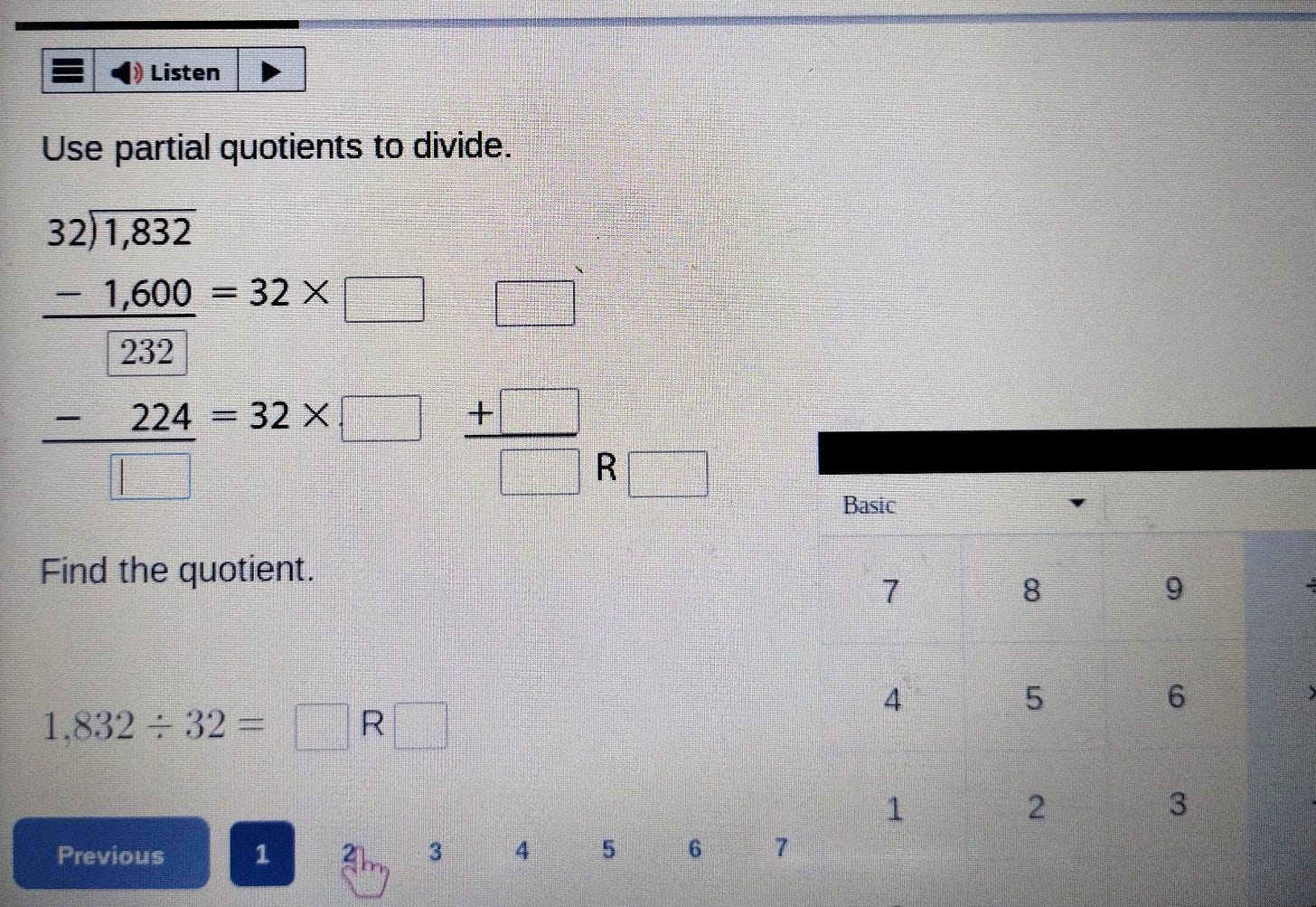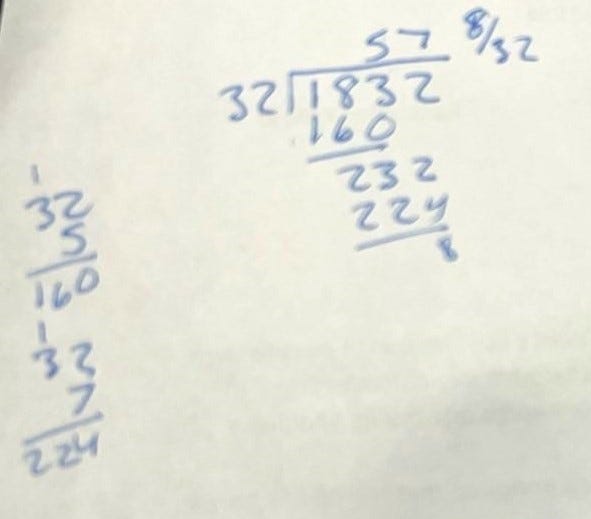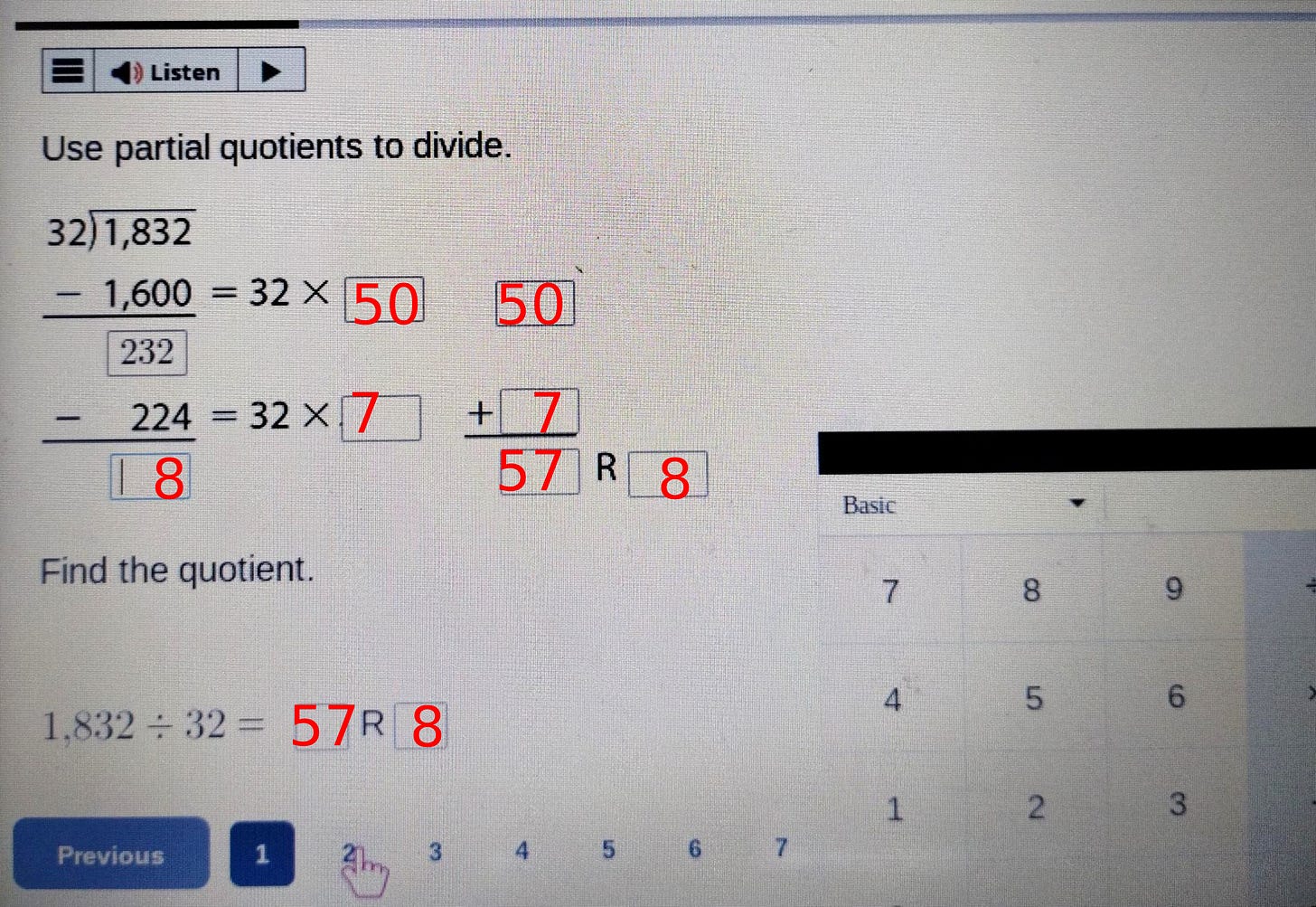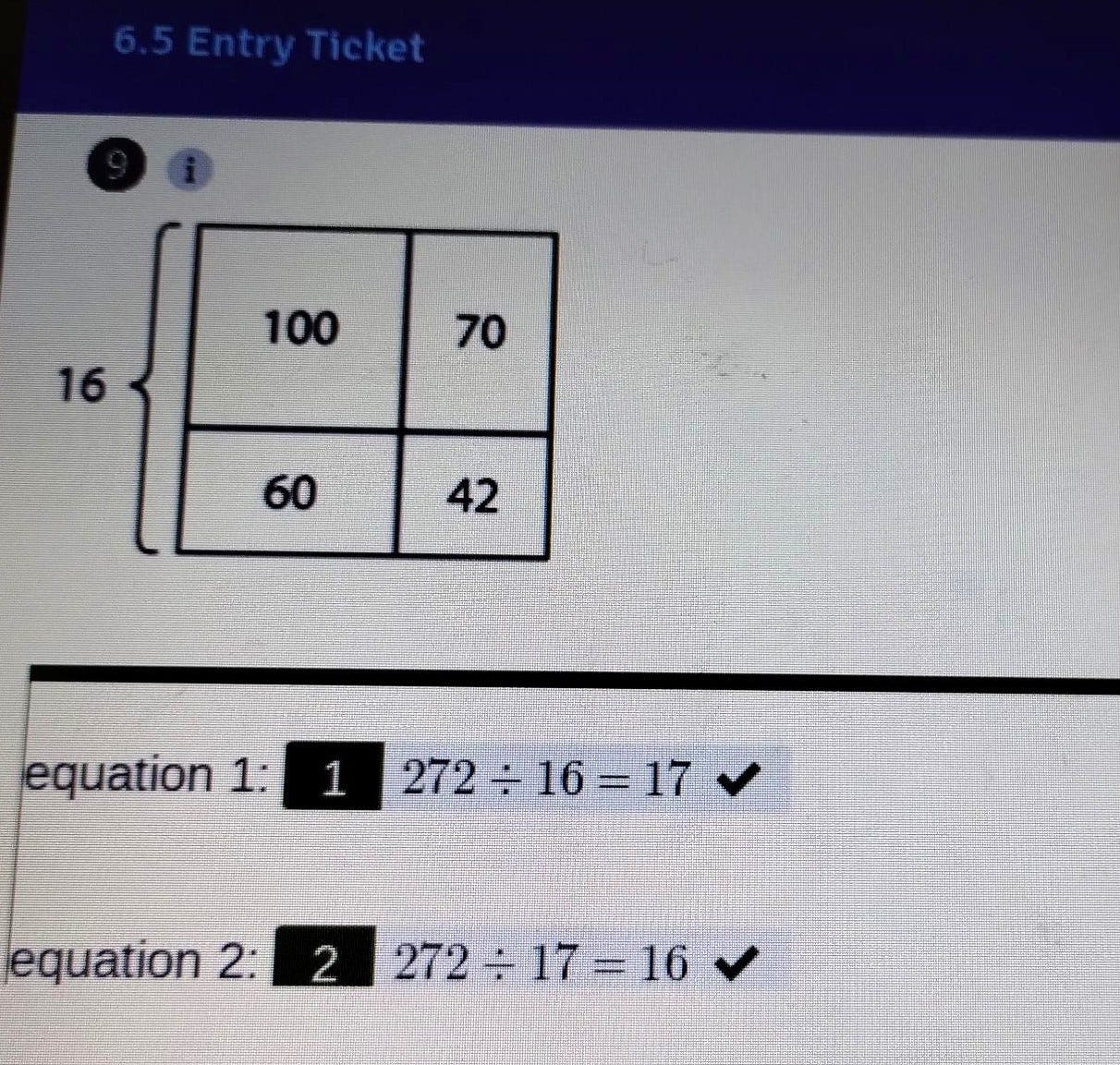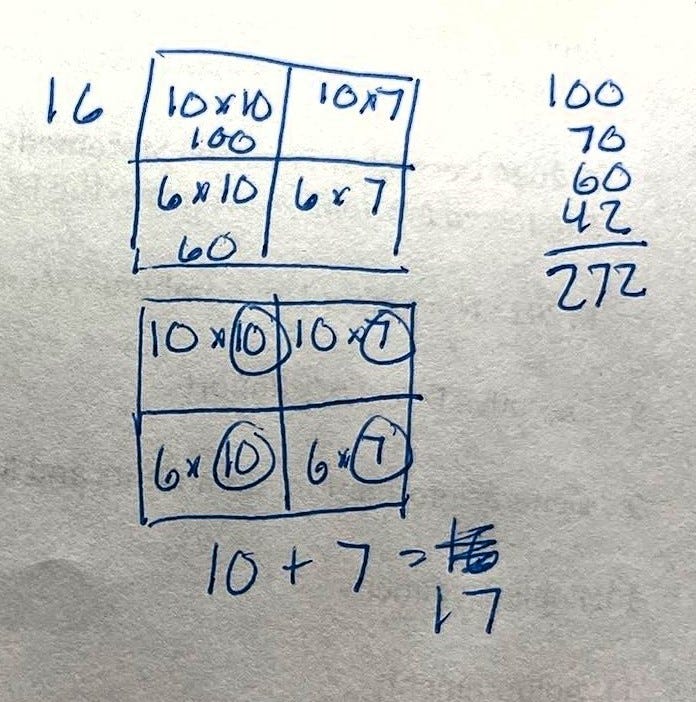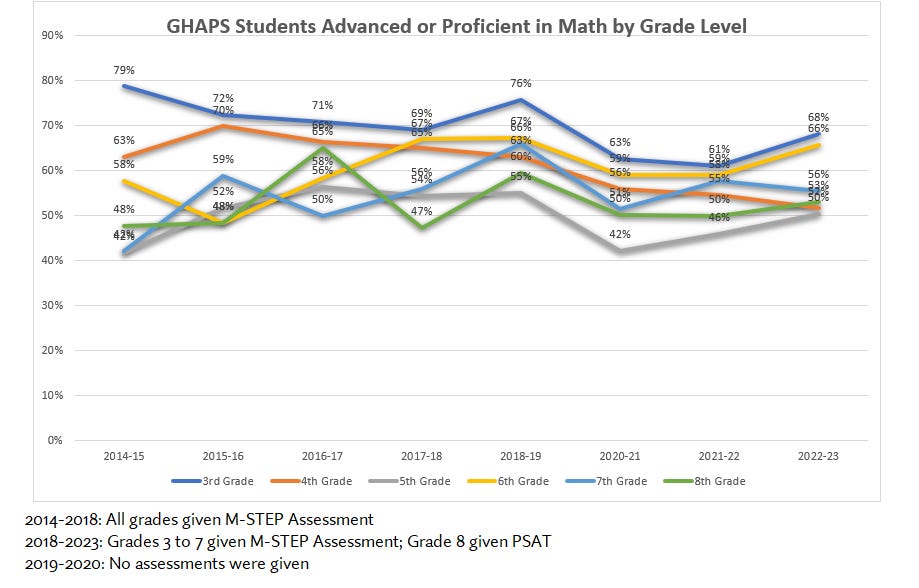School districts have moved away from pencil, paper, and memorization math facts and it shows. Today’s math is more about drawing boxes and making simple memory work complicated. Check out these two math problems from the Big Ideas curriculum given to students at White Pines middle school. Most people without a math background have difficulty making sense out of the way this problem is presented. Can you?
Problem 1
This question is asking students to divide 1832 by 32. Most people born before 2000 probably learned to solve this problem as pictured below:
Traditionally, students were taught to begin the problem by multiplying 32*5 to get 160, then subtract. The problem given to students today asks them to determine what 32 was multiplied by to get 1600. Rather than multiply 32*5 as in the traditional method, the problem adds a zero to 160 and expects students to determine they should multiply by 50. The answer is 50 which should be written in the first box. I won’t bore you with the rest of the details. The next image shows the problem solved.
Problem 2
It takes most people quite some time to even determine what this question is asking. The problem above is shown already solved. Students were expected to determine the two equations represented by the figure. The intent of the four-square box is to show how the tens digit and ones digit in the number 16 work to result in 272 divided by 16 being equal to 17. In the figure, the top row is for the tens digit and the bottom row is for the ones digit. The four boxes added together total 272. Again, a picture is worth one thousand words, so please see the image below to facilitate understanding how students are to find the number 17 in this problem.
My head is spinning after focusing on these two problems and I have an extensive background in math. It’s no wonder students across the country are struggling. We previously reported on GHAPS M-Step scores, and the chart below provides an update to GHAPS math proficiency for students in grades 3rd-8th. Depending on grade, only a maximum of 68%, with most grades closer to 55%, of GHAPS students are proficient in math.
Math is a timeless subject that does not change, but what has changed is the teaching method. In 2010 the State of Michigan adopted Common Core. Today, teachers show students multiple different methods for solving the same problem. Whereas, in the past, teachers typically would explain one method, and any student who did not understand was shown an alternative method. Today, by the time students learn all of the methods, most are thoroughly confused.
When I was in school, kids in math class would ask, “why do we need to learn this?” and “when are we ever going to use this?” Math is a subject that does not always make sense to children when they learn it. It is the procedures and concepts that are being memorized, and later the applications are learned. Children being confused by learning a plethora of procedures do not readily have the ability to determine which procedures are important. They may grasp some of the material, but fail to commit key pieces of information to memory simply because they do not recognize their significance. This results in greater confusion as they progress. Math builds upon itself, and students must learn the foundational skills in order to be successful in the more advanced topics.
The Big Ideas curriculum is extremely popular and is being used by school districts across the country. Here is the link if you would like to explore more modern math problems.
Confusing students and slowing down their progress by teaching them all the ways to solve a problem is not serving our children, and the test scores are a reflection of that, so it begs the question: Why are schools teaching math this way?
Answer: They are teaching this way because the stakeholders in the Department of Education and experts in the universities told them to.


